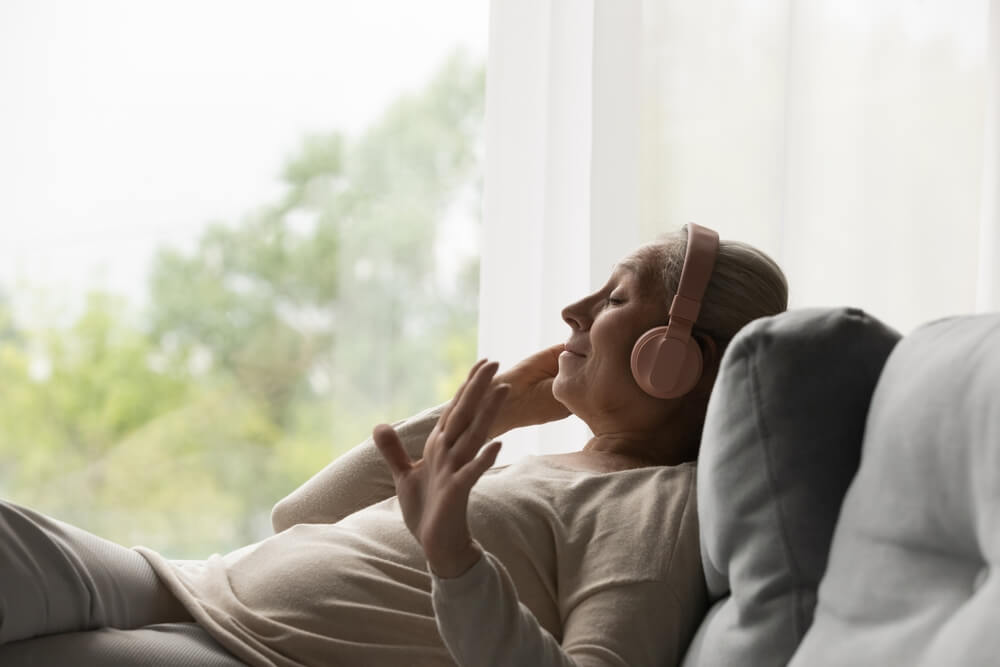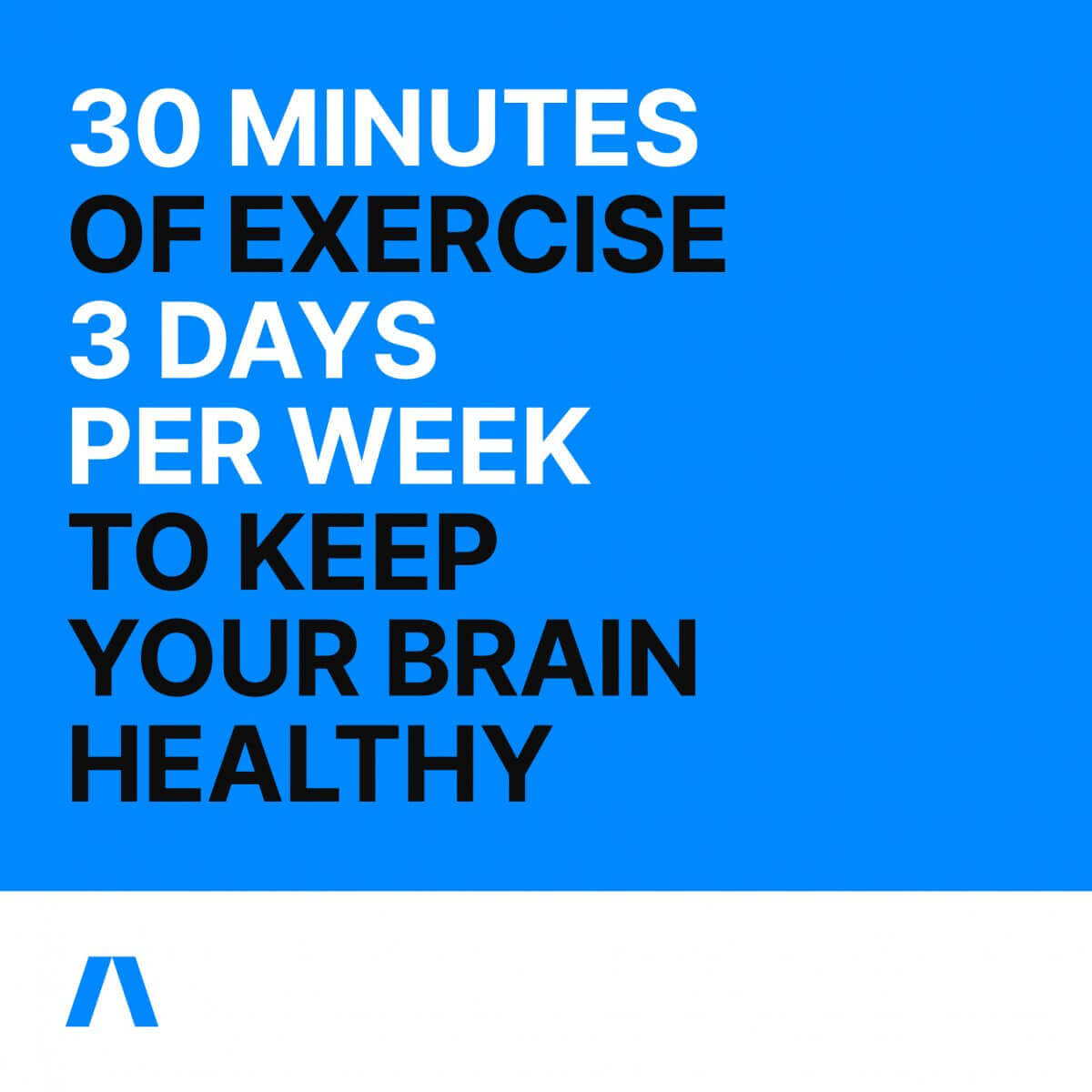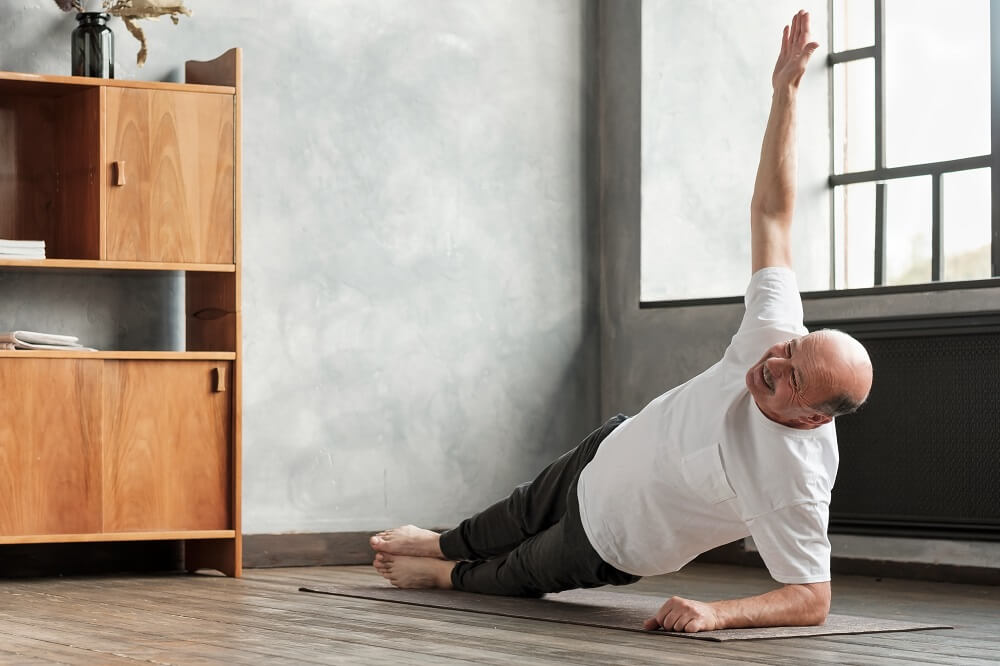Your Health Is Your Wealth: The Importance of Investing in Your Health
The daily choices we make and the activities we engage in impact our quality of life. While health problems and expenses might be an expected norm with age, there are ways you can minimize or even avoid them altogether.
At Aviv Clinics Dubai, we believe making more conscious decisions today will give you the healthspan you deserve. Learn the importance of investing in your health and nine ways to get started.
Note: Speak to your doctor before you pursue any lifestyle changes.
1. Consider the MIND Diet
Eating healthy has been a consistent mantra over the years, and for good reason—there is a connection between diet and disease. A healthy diet is the foundation for feeling good.
While there are numerous diet trends out there, there is one truly worth your time and investment—the MIND diet.
The Mediterranean-DASH Intervention for Neurodegenerative Delay (MIND) diet is a blend of two highly effective diets:
- Mediterranean: Consists of a heart-healthy eating plan
- DASH: Aims to address hypertension or high blood pressure
Studies illustrate the MIND diet is “associated with reduced incidence of Alzheimer’s disease.”
Sticking to this diet that entails a variety of fruits and vegetables provides anti-inflammatory effects on the brain. This impact can strengthen brain cell structure and help regulate anxiety and mood.
2. Engage in Intermittent Fasting
We know—fasting doesn’t sound like the most exciting thing. But consider intermittent fasting. Not only can you achieve a healthy body composition, but you can also improve your brain health—all without strict dietary restrictions.
Intermittent fasting is a dietary lifestyle that comprises alternating periods of eating and fasting and limiting the number of hours you consume calories during the day/week.
This metabolic switching:
- “Promotes neuroplasticity and resistance of the brain to injury and disease”
- May “decrease the progression of Alzheimer’s disease in mice through changes to the gut microbiota”

3. Stay Educated on Fall Prevention Tactics
“Falls in older adults are a reasonably common occurrence.” Conditions that become prevalent as we age (e.g., muscle weakness, osteoporosis, and balance and gait problems) make us more susceptible to falls.
The key ingredient to prevention? Exercise. This entails:
- Strength training
- Cardio training
- Balance training
- Flexibility training
Other fall prevention tactics are just as important.
- Keep your home clear of clutter and trip hazards such as cords, books, shoes, etc.).
- Install grab bars in the bathroom and handrails in the hallways and stairways.
- Avoid wearing clothing that drags on the ground.
- Wear non-slip socks or shoes around the house.
- Take a pause after standing up and before beginning to walk.
4. Find Helpful Ways to Cope with Stress
Stress is inevitable, and the body and mind are biologically equipped to handle it. But sometimes, when the stress gets overwhelming, it can have adverse effects. ”Stress affects not only memory and many other brain functions, like mood and anxiety, but also promotes inflammation.”
Chronic stress can:
- Kill brain cells.
- Cause memory decline.
- Negatively impact mental health.
Whether you are grieving or dealing with a major change in your life, it’s essential to find healthy coping mechanisms for stress:
- Make time for physical activity: At Aviv Clinics, we recommend 30 minutes of exercise three days a week at a minimum. Exercise benefits the brain by releasing endorphins, helping relieve pain, and improving mood. The key is to find an activity you enjoy—this will make exercise fun and feel less like a chore.
- Be conscientious about screen time. Experts say, “The goal isn’t to eliminate screens from your life; it’s to imbue the time you spend on screens with ‘intentionality.’” When used wisely and with purpose, technology offers worthy benefits. But misusing it can cause more harm than good. Thus, stay aware and focus on balancing screen time with other activities.
- Meditate. Not only is meditation a great activity to do instead of “doom scrolling” on your screen, but meditation may promote several benefits such as “reduction of cognitive decline” and “increase in quality of life.”

5. Focus on Body Composition Instead of Weight
A low number on the bathroom scale doesn’t necessarily mean all is well. Indeed, society’s obsession with the scale can lead to problems like declining muscle mass—a condition that will do more harm than good later in life.
So toss that unhealthy relationship with the bathroom scale. Instead, look at your overall body composition.
For example, Aviv Clinics uses the seca scale to get a precise rundown of the meaning behind a person’s weight. This scale helps us develop an accurate and customized treatment plan—losing body fat, gaining muscle, or a combination of both.
Speak to your doctor to gain a comprehensive assessment of your body composition so you can make appropriate, personalized goals.
6. Stick to a Consistent Sleep Schedule
Since the sleep hormone melatonin naturally decreases with age, it’s vital to set up healthy sleeping habits. This entails turning off all electronics an hour before bedtime and getting in bed at the same time each night. Doing so will promote natural circadian rhythms and maintain cognitive health.

7. Engage in Games
Investing in your health doesn’t have to be boring—it can include games!
That’s right, playing brain games is a fun and active way to train your brain. Researchers report “the effectiveness of cognitive intervention in maintaining cognitive health over the long-term.”
The brain functions similarly to muscles building muscle fibers after exercise—it promotes new neurons and neuronal connections after participating in games.
8. Listen to More Music
When was the last time you truly listened to music? What kinds of images and memories did it elicit?
Music offers far more advantages than helping you get through a grueling drive or setting the tone for a party. The best part is these benefits are backed by research.
Studies illustrate music can:
- Improve “cognitive function in people living with dementia, as well as quality of life after the intervention and long-term depression.”
- Reduce “measures of anxiety in a population of residential care patients with dementia.”
- Provide “better sleep quality” for “adults who listened to 45 minutes of music before going to sleep.

9. Find a Research-Backed HBOT Program
Hyperbaric oxygen therapy (HBOT) is a treatment in which the patient breathes 100% pure oxygen in a pressurized chamber. Aviv’s luxury, state-of-the art hyperbaric oxygen therapy suites are the largest and most advance in Dubai and the surrounding region.

Several studies illustrate the potential of HBOT in improving cognitive, physical, and psychological performance when administered in a specific protocol. Aviv Clinic’s HBOT protocol fluctuates oxygen levels during each hyperbaric session. This system increases oxygen levels in the body up to 20 times higher than normal and boosts your brain’s ability to heal.
The unique medical program at Aviv Clinics consists of a treatment program that include this same research-backed HBOT protocol along with cognitive training, dietary coaching, and physical performance training in a physician-designed program tailored to each client’s needs.
This holistic approach gives each patient the personalized care they deserve for their unique health conditions. Our clients have optimized their athletic performance with HBOT and have found relief from debilitating medical conditions such as stroke and traumatic brain injury.
Couple Pursues Healthy Aging & Cognitive Decline Prevention | Bob & Laurie’s Story
Invest in Your Health at DP World’s Aviv Clinics Dubai
The Aviv Medical Program stands by a holistic treatment program that targets all areas discussed above. A series of independent clinical trials illustrate how our program helps treat the symptoms of different health conditions.
5 tips for sound sleep and a healthy brain
It doesn’t matter what age you are, getting a good night’s rest is essential for your physical and mental health. Taking the time to recharge every night is especially vital because sleep and brain health are closely related. However, as we age, sleep doesn’t always come as easily as it used to.
In a 2003 poll, the National Sleep Foundation found that over 48% of older adults experience symptoms of insomnia more than twice a week, and the National Institute on Aging reported that insomnia is one of the most common problems experienced by adults aged 60 and over.
Insomnia and sleep disruptions have been known to worsen health conditions like Alzheimer’s disease and increase your risk factors for developing other health problems, including heart disease, Type-2 diabetes, and hypertension. Let’s dig into the science behind sleep and what are our five best tips for a good night’s rest!
Why sleep is so important to our bodies
Sleep gives your body some much-needed rest, but it’s also vital for maintaining your cognitive health. When you lie down to sleep at night, your body takes this time to cleanse your brain of toxins and waste. The space between your brain cells actually enlarges during sleep, allowing your body to wash out harmful substances like beta-amyloid proteins, which researchers have linked to the formation of Alzheimer’s disease. It follows, then, getting enough sleep can help ward off Alzheimer’s disease.
A poor night’s sleep has also been tied to forgetfulness and lapses in memory. Because sleep is the vital period when our brains take time to consolidate our memories, not getting adequate sleep makes you more likely to forget things during the day. A good night’s rest is one of the most powerful weapons in your arsenal in the fight against mental aging.
Why getting enough rest is more difficult as we age
Production of the “sleep hormone” melatonin naturally decreases with age, making it harder for older adults to fall asleep and stay asleep. The aging process also causes changes to the body’s natural circadian rhythm, which can make you get tired earlier than usual. Because of this, older adults are also more likely to experience restless sleep and waking up throughout the night.
Environmental factors can also be to blame, such as stress or a lack of structure in your life. Recent retirees sometimes have a hard time adjusting to changes in their schedule, which can lead to fitful sleep.
How to get a good night’s sleep: build healthier sleep habits
Now that you know why a good night’s sleep is so vital, you’re probably wondering how you can improve the quality of your own rest. If you struggle with tossing and turning or restless nights, don’t worry. The good news is that healthy sleep habits are universal and can be practiced by anyone of any age.
It’s never too late to establish a healthy nighttime routine! Here are our 5 best tips to help you combat insomnia, in no particular order.
Work up a sweat

Exercise helps to keep you in good shape, but did you know that exercising can also improve your sleep? The Sleep Foundation has demonstrated a clear link between exercise and improved sleep quality in adults. Try using a fitness tracker, which can be useful to show your progress and motivate you.
To rest easier at night, try going for a brisk walk or bike ride outside. Exposing yourself to sunshine and fresh air can improve circadian rhythm, so you can stay active with your favorite outdoor hobbies like gardening and fishing. Just be careful not to exercise too late in the day–getting worked up too close to bedtime may actually keep you awake!
Don’t nap during the day
Napping is common among older adults and retirees, with research showing that around 25% of older adults take naps daily. But did you know that your daily power nap may actually be doing more harm than good?
It’s true. While a brief nap can be beneficial for a boost of energy, excessive napping can disrupt your circadian rhythm and make it harder to fall asleep at night. If you absolutely must have a nap, try to take it earlier in the day and make sure to sleep for no more than 30 minutes.
Establish a bedtime routine
Human beings are creatures of habit, so practicing good habits before bed can help improve your rest. If you don’t already have one in place, try establishing a nightly routine before drifting off to sleep.
You can engage in soothing activities like taking a bath, reading a book or meditating, to relax before bed. Sleep comes easier in a cold room, so make sure that your bedroom is cool before you lie down. Always try to fall asleep at roughly the same time every night to establish routine, and make sure that you fall asleep while lying in bed–not in a recliner or on the couch.
Turn off the TV
Although many of us like to fall asleep with the glow of the TV to keep us company, staring at screens before bed can actually disrupt your sleep. The blue lights found in common electronic devices like smartphones, tablets, TVs and computers can disrupt your natural circadian rhythm. That’s why experts recommend cutting out all screens and electronic devices before going to bed.
A few hours before your usual bedtime, turn off all your TVs and power down your tablets, phones and laptops. You can replace time in front of the TV with screen-free activities like doing a jigsaw puzzle, playing cards or drawing in an adult coloring book. Instead of sleeping with your phone on your bedside table, try plugging it up to charge in another room. You’ll be less likely to check for texts or emails in the middle of the night and can rest more peacefully.
Cut back on caffeine and other foods
Eating or drinking certain things too close to bed can cause sleep problems. Foods high in caffeine like coffee and chocolate have been shown to disrupt sleep patterns and interfere with melatonin production. Drinking alcohol late at night also could lead to restless sleep because it can cause decreased REM sleep. Never use alcohol as a sleep aid.
If you can’t do without your morning coffee, that’s perfectly all right. Just make sure that it stays a morning cup. Avoid consuming coffee in the afternoon and eating large meals too close to bedtime. Don’t drink too much water before bed, either, if waking to go to the bathroom is a problem for you. If you must eat before bed, try having something to boost your melatonin, like a handful of almonds or a cup of tart cherry juice.
The bottom line
Along with diet and exercise, getting a good night’s sleep is one of the most important things you can do to maintain a healthy mind and body.
If you’ve tried all these tips and nothing works,
contact Aviv Clinic and schedule a free consultation with our care team: click here
Exercise and Brain Health: Tips to get the most from your workout
The science is pretty clear: exercising and maintaining good health are some of the best things you can do to keep the body at peak performance. But there are more than a few options out there when it comes to exercising. Exercise and brain health are closely linked. Are some forms of exercising better than others when it comes to the brain? Are there right–or wrong–ways to exercise when it comes to maximizing brain power? And how does exercise affect the aging brain?
Aviv Clinics clients receiving the innovative hyperbaric oxygen therapy treatment optimize their brain health because their personalized treatment plan combines cognitive and physical training, plus receive nutritional coaching. As part of the program, clients exercise on the cutting-edge h/p/cosmos medical treadmill at the clinic. The combination of physical and cognitive effort maximizes the benefits of the treatment protocol.
How cognitive abilities change with age
While most Americans fear losing their memory and cognitive abilities, far fewer actually do. As we get older, a slight level of cognitive decline is inevitable due to the normal aging process. It’s common to have issues with memory and slower thinking. But older adults are also increasingly at risk for mild cognitive impairment and dementia, the latter of which includes conditions like Alzheimer’s disease.
While some of the risk factors for these conditions are out of your control, such as age, genetics, and family history, your overall health plays a role, too. Staying healthy and active can protect the brain.
Lifestyle matters

Our brains haven’t changed much in the last 50,000 years or so, but our lifestyle certainly has. In the days of our nomadic, hunter-gatherer ancestors, life was a little more physically demanding–our bodies are designed to move and be active. Sitting, it seems, could be making us sick.
According to LifeSpanFitness, these days the average American sits for 11 hours a day, and an estimated 20% of all deaths over age 35 can be attributed to a sedentary lifestyle. Lack of exercise, poor diet, and use of alcohol, tobacco, or drugs are often a starting point. Falling into this sedentary lifestyle can quickly lead to a downward spiral.
The spiral of decline
If there are underlying conditions or you have risk factors for certain conditions, a sedentary lifestyle can exacerbate them or lead to chronic disease. Dealing with chronic illnesses is difficult even with access to good healthcare, but many do not or cannot get proper care, further exacerbating present conditions. Helplessness and hopelessness about the situation can then lead to anxiety and/or depression. You may feel like you can’t live the life you used to, and may find yourself self-isolating. Unfortunately, declining physical and mental health can set you up to be even less active, and the cycle continues.
Your brain isn’t the only organ affected by this vicious cycle; this kind of lifestyle can lead to problems with cardiovascular health as well. In fact, they seem to be intricately linked; in general, things that improve heart health improve brain health, too.
How are exercise and brain health linked?
Anytime that you exercise, you’re pumping more blood to your brain tissues, and with that comes a lot of oxygen and other nutrients, vital for the brain’s functioning. In response, the brain also cranks out some helpful molecules. Here are just a few benefits of exercise for the brain:
-
- Neurotransmitters (NTs) like serotonin, norepinephrine, and dopamine are released, improving mood,
motivation, focus, attention, and learning - Brain-derived neurotrophic factor (BDNF) helps your brain repair and rebuild, creating new neurons and
connections - Hormones work with BDNF and can boost your mood and mental clarity
- Endorphins and other molecules are released, helping relieve pain
- Increased blood flow delivers nutrients and carries away waste products
- The hippocampus increases in volume
- Neurotransmitters (NTs) like serotonin, norepinephrine, and dopamine are released, improving mood,
Two areas of the brain are particularly important when it comes to cognitive decline. The prefrontal cortex (PFC) and the hippocampus. These areas are the most susceptible to cognitive degeneration or impairment.
The hippocampus, which is responsible for memory and learning, is affected by exercise in a few ways. Studies have shown that aerobic exercise can actually increase the volume of brain matter in the hippocampus, an area that will often decline in volume as we age and significantly with Alzheimer’s disease. It’s also where a lot of neurogenesis (creating new brain cells) is going on–at least if you’re exercising enough!
The other area that benefits directly from exercise is the prefrontal cortex–this is the CEO of the brain, responsible for most of our executive functions including decision making, attention, problem-solving, and goal setting. Studies have shown that older adults in particular can benefit from exercise due to increased executive functioning.
What’s the best kind of exercise?

Getting oxygen-rich blood pumping to the brain seems to be the best way to reap the benefits of exercise. Therefore, aerobic exercise (or cardio) is a good place to start. While all types of exercise have benefits, most of the studies favor those that elevate your heart rate and keep it there for a time.
The “prescription” for most older adults is to aim to exercise at a moderate-intensity for 30-45 minutes, 3-4 times per week. An easy way to keep track of your progress is with a fitness tracker. Find out if they are right for you.
Moderate intensity can be measured by keeping your heart going at the optimal rate, in this case, 70-80% of your maximum heart rate. To find out your max heart rate, subtract your age from 220. For example, a 70-year-old’s maximum heart rate would be 150. That means that to exercise at the right intensity, she should maintain a heart rate between 105-120.
You should warm up and cool down for aerobic exercise, but don’t count that as part of your total. The 30-45 minutes (as prescribed) should all be while your heart rate is at the target rate.
Tips for getting started
If you’re like many (if not most) adults, you might be starting more towards the sedentary end of the activity scale. The exercise prescription above is an ideal goal, and it’s used primarily because that’s what they did in the studies that showed the best outcomes for cognitive health. However, other studies showed that lower-intensity activities like walking (5 miles a week) and yoga could be beneficial, too.
Even if you’re aiming for that peak exercise intensity, there are lots of ways to make exercising for brain health more fun, easier, and less stressful.
Find movement that you love

Exercise is about movement, so find a way to move your body that you enjoy. If that’s running laps, great. If you love to dance, then dance! And there’s always sports and leisure–gardening, golfing, bowling, are all ways to move. Even window shopping or hula hooping can count as exercise. Need more ideas? Try any of these non-boring exercises!
Finding movement you enjoy can also help change your perspective and shift away from goals like weight loss that may feel like a chore. Focus on the way exercise makes you feel and the enjoyment you get from moving.
Start from where you are
If you’re already pretty active, or you’ve exercised a lot in the past, it’ll probably be easier for you to start. If you are not as active as you could be, that’s okay! It’s never too late to begin a new exercise practice.
If you really want to get the benefits of brain-boosting exercise, be aware of where you’re starting from and build from there. If you’re sedentary, jumping into an intense workout routine could be difficult physically and frustrating mentally. You’re more likely to stick with it if you’re realistic about your goals and abilities.
Focus on frequency
If you’ve struggled in the past to start an exercise practice, you’re not alone. Exercising consistently means forming a new habit, and that’s no easy feat. Starting any habit takes time, effort, and consistency for a little while. But the awesome benefits of habits are that once they’re formed, they’re automatic.
It might be tempting to jump in at full duration and/or intensity, but it’s also a good way to burn out. In the beginning, it helps to focus more on when and how often you exercise rather than how hard or how long. Even a few minutes a day is enough to tell the brain “this is what we do now.” Eventually, you won’t have to remind (or force) yourself to exercise anymore. Once the habit is formed, it’s much easier to increase the intensity and duration.
Add it up
Ultimately, it’s about moving more and being more active. There are many ways to sneak in more exercise and break up the sitting. For example, if you do sit a lot, you can try setting a timer to get up and walk around every hour. Or start counting your steps and aim to increase them every day.
Many of the classic ways to get more activity are still great, like taking the stairs, parking farther away, playing with kids, or housework and cleaning. Make it a goal to find a new way to squeeze in some activity every day.
Be patient
So how long does it take before exercising starts to pay off? While many of the benefits of exercise can be felt immediately afterward, such as improvements in mood and energy, lasting results will take longer. Plan on giving it at least six months to assess your brain’s progress.
When it comes to cognitive abilities, measuring and assessing can be a challenge. You may not notice a substantial increase in cognitive ability. As some cognitive decline will occur due to normal aging, it’s often about slowing it down rather than a full reversal. It’s also common for family and friends to notice a change before you do.
The bottom line on exercise and brain health
Find movement that you enjoy, and you’ll have a much easier time making time to exercise. No matter what shape you’re in or what activities you enjoy, you can find a way to optimize both your physical and your cognitive health.